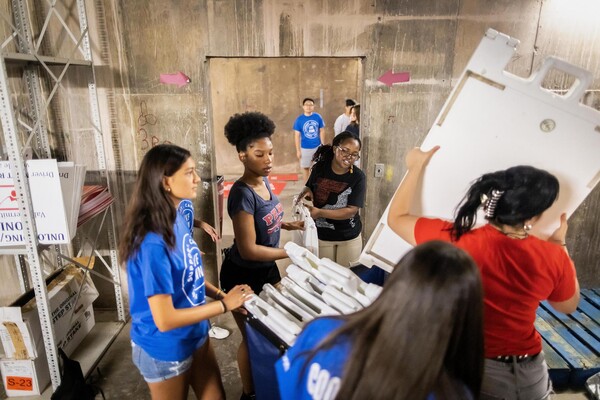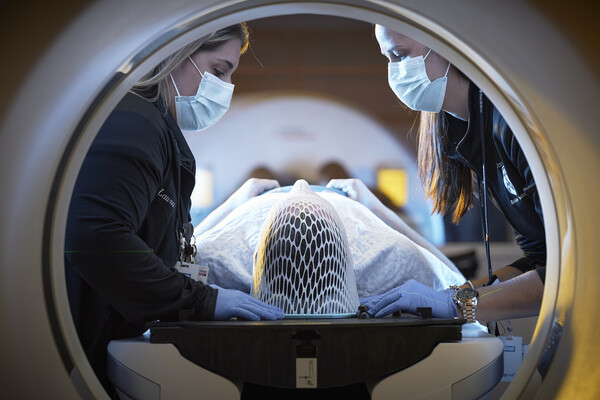Anderson offers an update
Performance art icon Laurie Anderson showed a standing-room-only crowd at Meyerson Hall March 24 why she is so widely esteemed as an engaging and humorous storyteller.
The occasion was part of a lecture series celebrating the 40th anniversary of the Institute of Contemporary Art, and Anderson was paired for the evening with Janet Kardon G’65, director of the ICA during the 1980s and now director emeritus of New York’s American Craft Museum.
Kardon, who exhibited Anderson’s work at the ICA in 1983, treated audiences to a slide roundup of some of the shows that kept ICA on the map throughout her tenure, including the controversial Robert Mapplethorpe photography exhibit.
Anderson adopted a less linear tack, offering up a series of loosely connected musings more about her present projects—she’s NASA’s first artist-in-residence this year, and she’s also working on a large installation for the World Expo 2005 in Japan—than past achievements.
Born in 1947, Anderson emerged on the downtown New York arts scene in the 1970s. A constant stream of innovative work in the intervening decades—including the surprise hit single “O Superman” and, more recently, a multimedia interpretation of “Moby Dick”—has kept the elfin artist at the forefront of experimental art.
About her research for the NASA residency, Anderson said, “It’s so rare to get a chance to be the first at anything. How does an artist work with such a massive, sprawling conglomerate as that?” Watching the Rovers being built, she said she realized that “the problem is that they’re really smart, but the little calibrations can get off and they’re always missing the rocks they’re trying to pick up, but just by the tiniest amounts. Where they are and where they thought they were is not exactly calibrated, which is my problem 90 percent of the time.”
Anderson said she plans to incorporate images of Mars into her Japanese garden installation. Some of Anderson’s 200-plus ideas for the garden—she showed slides of a handful of “rejects”—incorporate high-tech gizmos like infrared binoculars. Others are as simple as a long , hollow pole that lets visitors study the streambed.
For an artist who has so embraced technology, Anderson’s relationship with it remains ambivalent. “I’m supposed to be this multimedia person,” she said, but for a long time, “it seemed like technology was cheating us.” Now, with lower prices and smaller, lighter products, “I think it’s genuinely making people more free.” Still, she said, computers are limiting. “You think the world belongs in there, and you become a little weird.”
Calling herself a geek who “could stay in my studio all day doing Photoshop,” Anderson said she decided a year ago to force herself to get away from her computer and start walking, “to try to learn another way to be free.” Recent walking adventures have taken her from Paris to Chartres and Athens—where she was invited to write the narrative for the 2004 Olympic ceremony—to Delphi. “I don’t know if this is art,” she cautioned. “I really don’t.”







